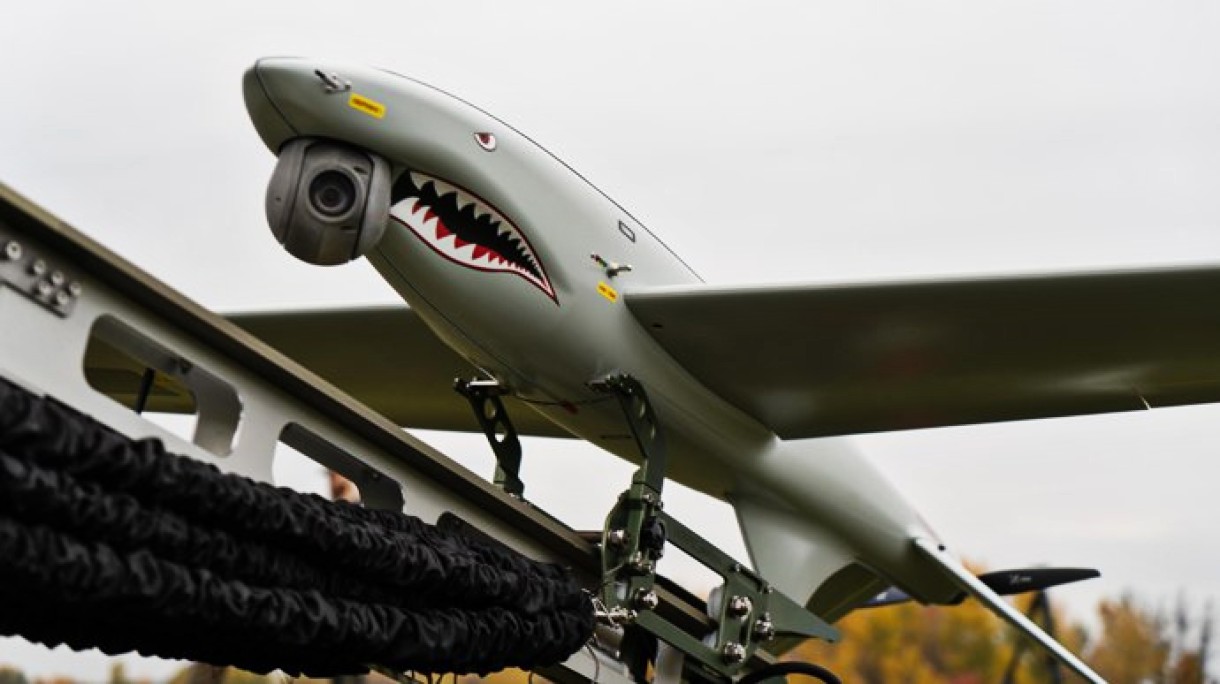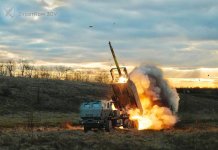Ukraine’s defense industry has revealed a new drone, developed amid the war, for coordinating artillery fire on Russian troops. A Ukrainian arms developer proudly announced that the development began immediately after the war started on February 24, when Russia launched its “Special Military Operation (SMO).”
The drone has been developed despite Russia targeting Ukraine’s military industry and infrastructure to degrade its war-waging potential. This is consistent with Moscow’s goal of “de-Nazification” and “demilitarization” of Ukraine.
#Ukraine ?? has created a reconnaissance drone "Shark" capable of correcting the fire of weapons such as HIMARS.
The drone can go deep behind enemy lines up to 60 km and conduct surveillance at a distance of up to 5 km from the drone to the object. pic.twitter.com/ikZt7NrAmy— MAKS 22?? (@Maks_NAFO_FELLA) October 27, 2022
Russia began the war with long-range missile strikes, primarily using its Kalibr missiles, launched from its warships in the Black Sea.
It announced destroying many military, military-industrial, and military-linked civilian infrastructures that paid dividends in the form of Ukraine having to depend entirely on Western-supplied weapons.
However, the Ukrainian government seems to have taken concerted measures to preserve whatever is left of its Soviet-era industry. With the start of the Russian military operation, the Ukrainian defense industry continued functioning and introduced the SHARK reconnaissance drone, designed to “adjust fire.”
This means it directs rocket and artillery fire, giving them the correct coordinates in case the shells fall in the wrong place. This eliminates the need for forward observation troops to coordinate fire and can also be employed for systems like the American High Mobility Artillery Rocket System (HIMARS).
SHARK Born In A Shark Tank!
Ukrspecsystems, the company that developed the device, released a picture on Twitter without the drone’s name. It mentioned the SAHA Expo in Turkey from October 25 to 28, indicating the drone must have been unveiled there.
The company said that it began to design and develop the UAV “after February 24, in conditions of a full-scale invasion of the rf [sic] (Russian Federation). And in less than half a year, SHARK was already flying.”
The company particularly emphasized that the development period involved the complete route from the bare conceptualization to production. This means the design stages took place in seven months, from the basic idea to finalization, components sourcing amid choked supply chains, manufacturing, and fielding the prototype.

The drone is equipped with an encrypted communication system, a rotating ‘Full HD’ nose camera/electro-optical system that can magnify the image by 30x optical zoom and additional digital zoom. It is launched from a catapult rail that pulls back the drone and releases it.
The device’s maximum range is 60 kilometers, an endurance of over two hours, a service ceiling of 2000 meters, and; a wingspan of 1.91 meters. It can touch a maximum speed of 150 kilometers an hour.
The first such drone was “likely” put into service with the Armed Forces of Ukraine in the summer. It was purchased from the company by a Ukrainian charitable foundation owned by volunteer Serhiy Prytula, according to a report on the popular Ukrainian defense and military portal, Ukrainian Military Center.
“The Armed Forces need different drones,” he was quoted in the report. A post on a Ukrainian Telegram channel additionally quoted him as saying, “After testing the new equipment in combat conditions, a decision would be made to supply a batch of such drones to the troops.” This quote, however, could not be independently verified.
Company Guarantees Quality
A statement from the company said SHARK provides high-quality, in-depth surveillance, tracking, adjustment of fire, and the ability to locate the enemy in real time and fix its movements. “In general, the UAV monitors the battlefield and manages the actions of the unit, considering the current situation,” it added.
“The drone is equipped with a highly reliable communication module and a modern camera system that allows it to go deep into the enemy’s rear (up to 60 kilometers) and conduct surveillance at a distance of up to five kilometers between the UAV and the object.
This is especially important when planning and conducting offensive operations and predicting the enemy’s actions,” the developers said.
A promotional video released by Ukrspec Systems shows the drone launched into the air by a catapult launching system. It then tracks one of two ground vehicles with a camera crosshair from the fixed electro-optical system.
The drone is then recorded from the ground, where it suddenly releases a parachute and descends, presumably recovered by the crew.
The simple recovery mechanism indicates the drone has a purely observation and fire correction role for quick, tactical battlefield use. It is unclear how Ukraine plans to hike drone production, given Russian strikes that have nearly disabled all of Ukraine’s defense industrial base.
But even an increased production has to be backed by artillery gun systems in short supply in Ukraine. Kyiv has lost most of its Soviet-era howitzers and field guns.
It relies solely on foreign systems like the US-made M777 lightweight howitzer, HIMARS, Polish Krab, and German PzH-2000 Self-Propelled Gun (SPG).
Russia has destroyed nearly a dozen M777s, while its Ministry of Defense (MoD) periodically claims to have intercepted the HIMARS rockets in mid-air. Only simultaneously hiking drone production and sourcing more artillery systems will have a noticeable effect on the battlefield.
- The author can be reached at satamp@gmail.com
- Follow EurAsian Times on Google News




